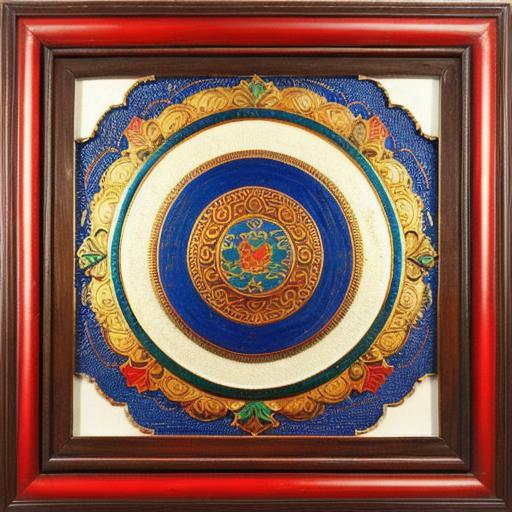Framing a Thangka, an intricately painted Tibetan Buddhist artwork, is an essential aspect of preserving and showcasing its beauty. The right frame enhances a Thangka’s vibrant colors and rich symbolism while protecting it from damage. Choosing the appropriate frame and materials for framing requires careful consideration to maintain the authenticity and integrity of this ancient art form.
First, let us discuss the frame selection process. Thangkas are traditionally framed using natural materials like wood or silk. Wooden frames can be made from various types of woods, including pine, cedar, and sandalwood. The choice of wood depends on personal preference and the specific artwork’s requirements. For example, pine is often used due to its availability and affordability, while cedar is preferred for its durability and resistance to pests.
Silk brocade frames are another authentic framing option. They add a luxurious touch to the Thangka, enhancing its aesthetic value. Traditionally, these frames are handwoven with intricate designs and patterns, further highlighting the artwork’s symbolism.

Alternatively, gold or silver frames can be used following the traditional Tibetan art style. These frames add a sense of grandeur and sophistication to the Thangka, making it an essential piece in any collection. Gold leaf framing is a labor-intensive process that involves applying gold leaves to the frame’s edges, providing a stunning contrast against the vivid colors of the Thangka.
Once the frame has been selected, the next step is preparing the mat. Acid-free materials must be used for the mat to prevent discoloration and damage to the artwork over time. The mat not only protects the Thangka from dust and other environmental factors but also provides a contrasting background that highlights its vibrant colors. Experiment with various colors or patterns in the mat to create an eye-catching combination.
Proper mounting and hanging of the Thangka are crucial steps in the framing process. Use Japanese paper or other archival-quality materials for mounting to ensure flatness and avoid wrinkles. These materials will not react with the artwork, preserving its authenticity and longevity. Hanging the Thangka requires secure and sturdy hardware that can support its weight without causing any damage.
Quote: “The right frame brings out the true essence of the artwork.”
– Unknown
In conclusion, when framing a Thangka, selecting the appropriate frame and materials is essential to preserve its beauty and authenticity. Using natural, archival-quality materials like wood, silk, Japanese paper, and acid-free mats ensures the longevity and protection of this ancient art form while enhancing its aesthetic value. Remember, avoid synthetic materials like PVC, as they can damage the artwork over time.















